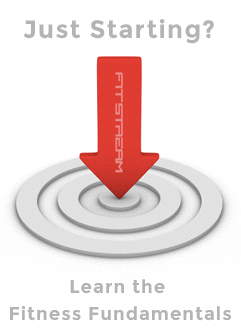Running for fitness
Long, slow running is almost synonymous with fitness today - perceived by many as the best means to weight loss, people don their headphones and reluctantly climb onto the treadmill for lengthy stints of torturous, monotonous movement.
Whilst running can be a great form of exercise, with many benefits, it's important that you approach and apply the training intelligently based on fitness goals. Running is like any other form of exercise - take weight training for example, and your approach to weights determines how you develop physically and the skills that are enhanced (i.e. low reps, heavy weights for strength gains vs. high reps, lighter weights for muscular endurance).
For the endurance athletes amongst us - long, slow running is obviously a sensible training choice. However, for the rest of us - it simply isn't the most efficient way to burn fat, train safe, and maintain muscle-mass or (for many) even an enjoyable fitness pursuit!
The benefits of running
Firstly you must identify your training goals - are you running to lose weight as part of an overall health and fitness regime, or to increase stamina for extreme-endurance events?
At Fitstream we focus on fitness enthusiasts - those looking to improve health, fitness and appearance. We believe training should be well-rounded, varied and intense. As a result we prefer sprint training or interval work to chronic-cardio as it's less monotonous and not detrimental to building muscle, whilst promoting an athletic physique.
One of the most common fitness goals is to build a strong, lean body, which is accomplished by maintaining (or building) muscle whilst burning fat. This can be a difficult thing to acheive and can only be built with the right kinds of exercise and diet.
Consider for a moment the difference in physique between an average marathon runner and a sprinter, and genetics aside, it's intensity which is the key to developing the sprinters body. Variable intensity walks, runs and sprint training are much more effective than steady state, mindless running for building an athletic body.
The benefits of running:
- Lose weight
- Develop endurance / stamina
- Improve health - Strengthen the cardiovascular system
 Losing weight
Losing weight
Distance running is not the most effective form of weight loss. Whilst the run itself is good at burning calories the metabolism isn't as fired up after the run to continue excessive calorie burn as it would be following a session of short duration, high-intensity exercise.
Sprinting is a great way to lose weight as it's more focused, intense running. You're running, but very, very fast, and in short bursts of output. Incorporating sprint training into your routine will maximise weight-loss, enhance growth hormone secretion, build power, and develop both anaerobic and aerobic capacity. It's the ideal choice of exercise to build lean mass and burn body fat.
Developing endurance / stamina
Stamina is one of the ten key components to fitness and in pursuit of well-rounded athleticism it's not a skill that should be overlooked. We all need stamina - from professional sports people who need to know that they have the capacity to see out the duration of their event, to fitness enthusiasts who require random bursts of work or play at any given moment, for as long as required.
Most people train for stamina by picking an activity like distance running and practice sustaining the exercise for increasing periods of time to build-up capacity. Whilst distance running is a good method of building up stamina, it shouldn't be used exclusively in your routine to avoid repetitive stress, overtraining or canabalising your own muscle-mass.

Improving health & strengthening the cardiovascular system
Most people incorrectly believe that intense aerobic activity is one of the main factors in staying healthy and that the more miles logged at the highest possible intensity equates to a bigger benefit to health and fitness.
However, rather than blindly running for extended periods, focus should be spent on devising a more balanced routine. Healthy workouts should be built around a variety of methods targeted at developing a range of fitness skills (strength, agility, stamina, coordination etc). Try to build a balanced routine that combines anaerobic activities like lifting heavy objects (weight training) and sprints, with more low level anaerobic activity such as walking or swimming.
If you love to run long-distance that's great. We just don't like to see distance running being mistakenly chosen as the best way to accelerate fat loss or to keep functionally fit.
 Running venue
Running venue
Machines rarely have any worthwhile benefit over real life, old-school training methods and a treadmill will never replace the stimulating, unique and varying environment you live in as a venue for your run.
Why not explore the world around you and soak up more than just the drive to work and your desktop. Take advantage of your surroundings and run on grass instead of concrete (or even better sand, which dampens the impact and increases the resistance!) and make use of hills for sprinting - the possibilities are endless.
Running and muscle building
Constant, chronic cardio is catabolic and not only inhibits muscle growth but can reduce existing muscle. Real muscle growth will come from activities involving short anaerobic bursts like sprints, intervals or weight-training.
If you love to run you can incorporate sprint training or varied intensity walking for effective cardio training without sacrificing your muscle-building goals.
Running safe
Continual long distance runs breed injuries, repetitive impact strains and over training. Try to be mindful of overtraining when training specifically for endurance as running marathons and engaging in high intensity endurance training on a regular basis is a quick way of wearing your body down. If you feel continuously lethargic, unmotivated or get sick a lot you may want to find a more balanced routine.
Distance running is not the only method of effective endurance training and should not be practised exclusively to avoid potential repetitive stress. Try combining running with other forms of training such as: sprints, skipping, cycling, sparring, circuit weight training or swimming.
Running variations
- Walking - a low-level, minimal impact form of aerobic training and safe over long distances.
- Sprinting - Run really, really fast in short bursts of output. Sprints are intense runs and an effective form of fat loss.
- Weighted running - Use of a weighted vest or back-pack for increased resistance when running. An effective form of weight-loss and as a means to increase exercise intensity.
- Ballistic running drills - Use of Resistance Bands to add ballistic runs into your routine.
- Barefoot running - a growing trend is seeing barefoot running popularised throughout the fitness industry, in which you run without footwear or using specialist shoes such as the Vibram Five-Fingers. Barefoot running is a self-limiting exercise, as the immediate feedback (or pain) helps you auto-correct your form, as opposed to masking this with over-engineered footwear.
 Fitstream AppTrack your fitness progress and see the difference for yourself with our free app
Fitstream AppTrack your fitness progress and see the difference for yourself with our free app





 Losing weight
Losing weight
 Running venue
Running venue





